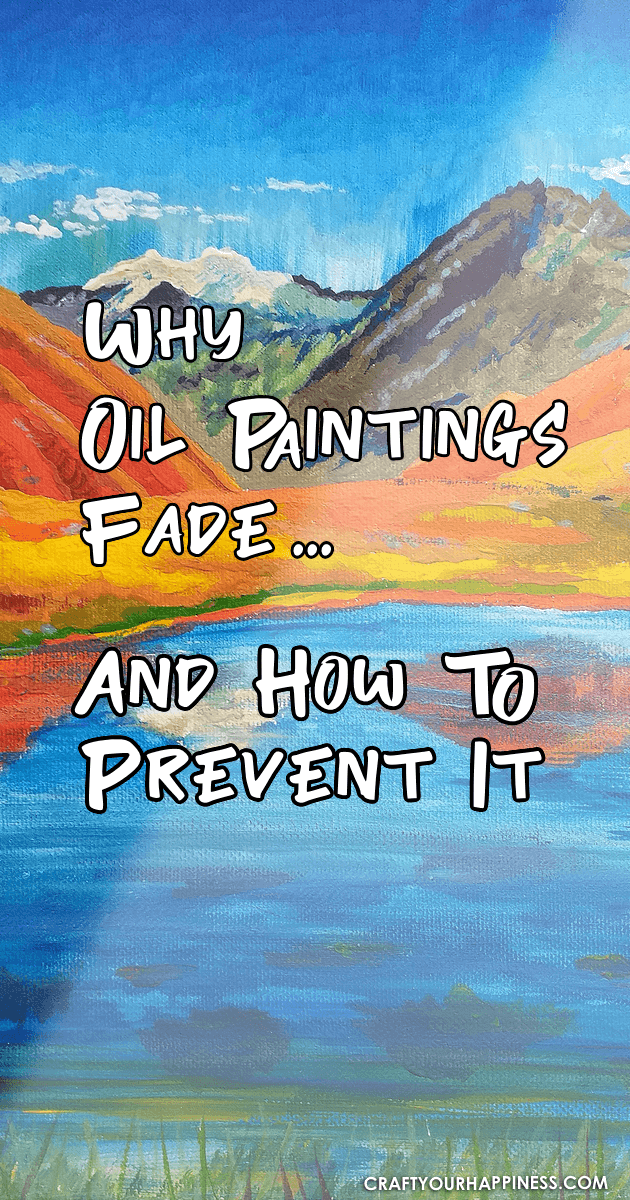
![]()
Are you an avid art enthusiast who absolutely loves the oil paintings? Do you wish to adorn your beautiful abode with incomparable masterpieces created using oil paints? If you answered ‘yes’ to both the above-mentioned question then you are one of the art aficionados who completely understands that a canvas oil painting is like a celebration of all the five senses and a passionate unearthing of a riveting tale of self-discovery. But with the possession of the classic oil paintings comes the responsibility of shielding your invaluable masterpieces from fading. While there are several causes responsible for the unfortunate fading, you’d be ecstatic to know that there are ways for oil painting protection. Therefore we’ve unraveled the prominent factors that cause fading and how they can be avoided.
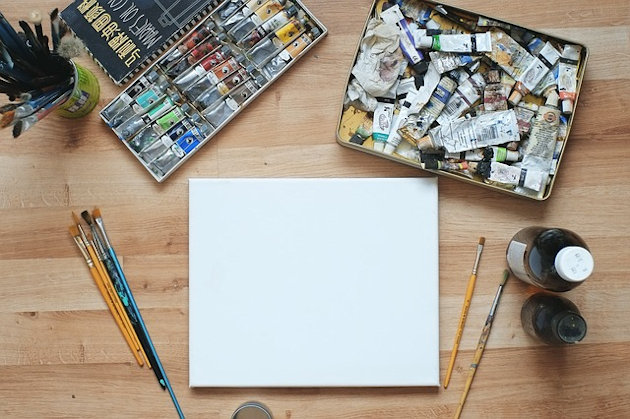
 Quality of pigments
Quality of pigments
Did you know that the paints in oil painting are an amalgamation of pigments with drying oils such as linseed oil, poppy seed oil, walnut oil, and Safflower oil? This is to give an excellent blending property to the color contour of a masterpiece. The prolonged exposure of linseed oil to direct heat from gas ovens, chimneys, fireplace, etc. oxidizes the paint with time causing the fading and loss of vibrancy. Though the modern oil colors are pretty good and do not oxidize easily due to the technology involved it’s a judicious idea to consider the lightfast property of the color pigment of a painting. The artwork with Grade I and Grade II color pigments are recognized as ones with high archival quality and if properly cared for will continue to dazzle the audience for years with minimal care.
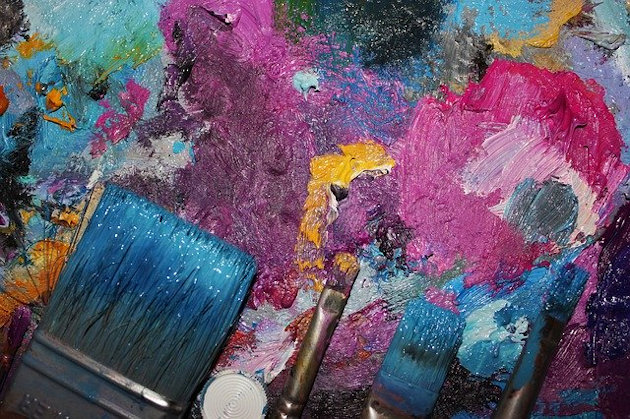
 Powerful Element of Nature
Powerful Element of Nature
It is never a good idea to hang the oil painting in the area where it can sunbathe. Why you may ask? The answer: any paint left in exposure to sunlight for hours fades away due to the presence of UV rays. You may have built a glass shield to prevent the fading but you should be aware that even the filtered sun rays cause immense harm. From losing its sheen and vibrancy to darkening of the varnish, sunlight can cause irreversible damage to the oil paintings. That’s not all! Extreme high temperatures can cause the painting to crack. Moreover, the presence of high humidity levels can make your best cotton canvas and linen moldy or stretchy.

 Surface and the Framing
Surface and the Framing
The acidity present in the canvas leads to the painting getting yellow and paler over time. Therefore, it’s recommended to have an acid-free canvas to avoid this painting predicament. 100% cotton rag that’s free of any acid is the choice of many artists. The same is the case when it comes to framing! Even if the canvas is of top-notch quality the frame can cause damage to the painting if it is acidic. Before you decide to beautify the oil painting, it’s recommended to research the framing material than purchase one off the cuff and regret. But the best part all of these can be avoided by taking some mindful measures. And as we know ‘Prevention is better than cure’ let us know the ways to avoid the undesired fading.

 Positioning the Artwork is Art Too
Positioning the Artwork is Art Too
Yes, placement of the artwork is the key to prevent fading. Positioning your painting away from direct sunlight and heat from various appliances available at homes can stop fading. This also increases the durability of the artwork making it a timeless beauty. What’s more, you may ask? The answer: high humidity also makes the colors lose its sheen so it is highly recommended to keep the artworks in properly vented areas. It’s important to let your artwork breathe for longevity.
 Reflection Control Glass
Reflection Control Glass
You can also opt for framing under UV protected glass or museum glass to alleviate the intensity of sunlight hitting the painting. There is special glass available for oil painting protection that minimizes sun damage to some extent. However, if you dislike the glare of the glass, you can go for the reflection control variety that’s easily available in the market. Many experienced art collectors also use track lighting with dimmers to preserve an artwork as they cause little to no damage. But it’s still recommended to not expose the incredible artworks to the sunlight.
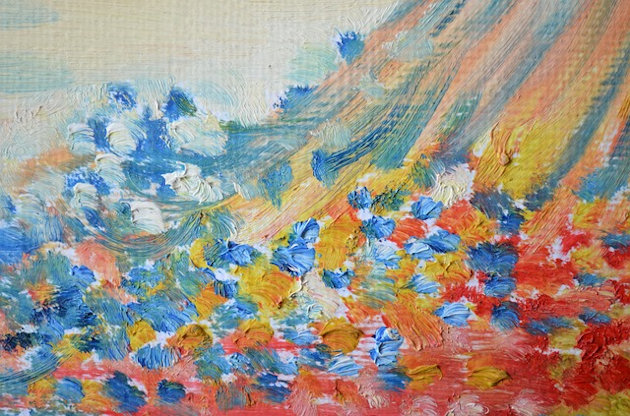
 Varnish to the Rescue
Varnish to the Rescue
Varnishing is not only an aesthetic choice that gives vibrancy and richness but also a tool to preserve artwork from elements of nature. Oil paintings can be varnished only when they are fully cured or dry otherwise it will hinder the oxidation process of oil in colors. Due to advancements in technology, there exists a kind of varnish that forms a permeable and breathable sheet over the painting allowing it to dry. This can be used if you don’t want to wait long enough for the painting to dry as it normally takes from 6 months to 2 years. Varnish the paintings and when it darkens all you have to do is remove the layer and your paintings will emblaze you with its vibrancy. It can also be applied directly on the surface of the painting as the solvents used to remove do not damage the oil paints.
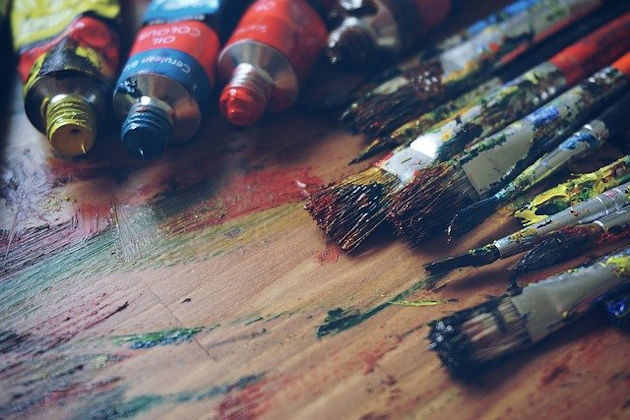
 Oil Paintings: Timeless Décor
Oil Paintings: Timeless Décor
Oil paintings without a doubt lend a unique flavor of class and elegance to your home. And adding more magnum opuses to décor your home is a dream come true for many art lovers. You can easily opt for quality reproductions available online which have high durability and authenticity of the original one. And with some precautions, you can save the magnificent artworks from fading in addition to cleaning the painting regularly.